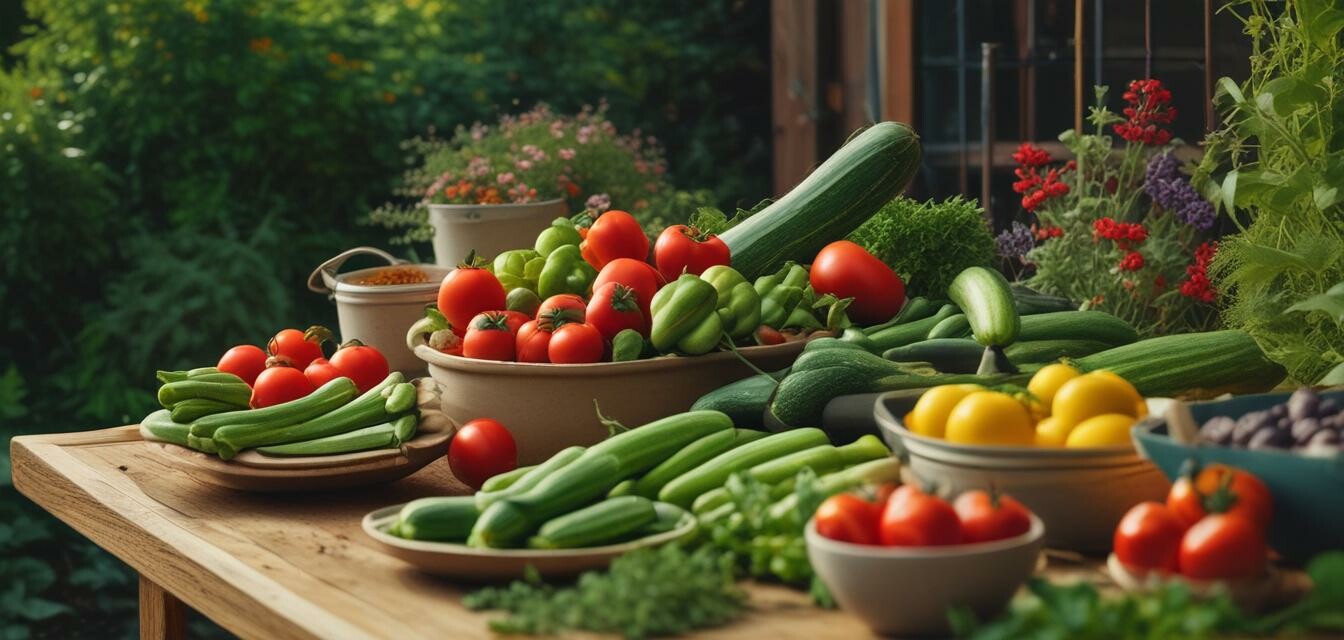
Eco-Friendly Soup Practices: Sustainability in Cooking
Key Takeaways
- Embrace local, seasonal ingredients for a fresher flavor and lower carbon footprint.
- Practice minimal waste strategies like vegetable scraps and leftovers.
- Explore sustainable cooking methods to conserve energy.
- Consider the environmental impact of packaging when selecting ingredients.
- Opt for eco-friendly cookware and utensils to create a greener kitchen.
Soup is a comforting and nutritious meal option, and incorporating sustainable practices into soup-making not only benefits the environment but also enhances the overall cooking experience. In this article, we will explore the various eco-friendly practices you can adopt while preparing your favorite delicious soups, such as the Zucchini Tomato Italian Sausage Soup.
Why Choose Eco-Friendly Soup Practices?
As we become more aware of our environmental impact, it's essential to consider how our cooking habits contribute to sustainability. Adopting eco-friendly practices in your kitchen can lead to significant improvements in waste reduction, energy consumption, and sourcing ingredients responsibly. Following suit can also inspire others to join the green movement.
Reducing Waste in Your Soup Kitchen
One of the most effective ways to embrace sustainability is by minimizing waste. Here are some simple yet impactful strategies:
- Use vegetable scraps: Instead of discarding vegetable peels, stems, and leftover bits, save them to create flavorful vegetable stock.
- Plan your meals: By planning your soup ingredients ahead of time, you can minimize the chances of purchasing excess items that may end up wasted.
- Repurpose leftovers: Get creative by using leftover soups as sauces or toppings for other dishes.
Choosing Sustainable Ingredients
Another critical aspect of eco-friendly soup practices is selecting the right ingredients. Here are some points to consider when shopping:
| Ingredient Type | Tip |
|---|---|
| Local Produce | Opt for seasonal and locally grown ingredients to reduce transport emissions and support local farmers. |
| Organic Ingredients | Choose organic products when possible to avoid harmful pesticides and promote sustainable farming practices. |
| Plant-Based Proteins | Incorporate more plant-based proteins in your soups, such as beans or lentils, for a lower carbon footprint. |
The Importance of Eco-Friendly Packaging
In addition to ingredient sourcing, being mindful of packaging is crucial in practicing sustainability. Here are some suggestions:
- Bulk purchases: Whenever possible, buy ingredients in bulk to minimize packaging waste.
- Reusable bags: Use your own reusable bags for shopping rather than relying on single-use bags.
- Choose unpackaged items: Seek out grocery stores or farmer's markets that offer unpackaged fruits and vegetables.
Energy-Efficient Cooking Methods
How you cook your soup can also contribute to sustainability. Consider these energy-efficient cooking methods:
- Slow cooking: Use a slow cooker to prepare your soups, reducing energy consumption compared to traditional stovetop cooking.
- Batch cooking: Prepare larger batches of soup in one go, allowing you to heat the stove less often.
- Using lids: Cover pots while cooking to conserve heat and reduce cooking time.
Eco-Friendly Cookware and Utensils
Utilizing eco-friendly cookware can further enhance your sustainable kitchen. Here are some options to consider:
| Cookware Type | Eco-Friendly Option | Benefits |
|---|---|---|
| Non-stick pans | Ceramic-coated pans | Free of harmful chemicals and more sustainably produced. |
| Traditional pots | Cast iron cookware | Durable and highly efficient for heat retention. |
| Plastic utensils | Bamboo utensils | Biodegradable and sustainable alternative. |
Conclusion
By incorporating eco-friendly practices into your soup-making process, you can make a positive difference for the environment while enjoying comforting and delicious meals. Whether you're using local ingredients or practicing waste reduction, each step contributes to a more sustainable kitchen. So why not take your passion for cooking to the next level while also caring for our planet?
Tips for Beginners
- Start slowly by adopting one eco-friendly practice at a time.
- Experiment with vegetable scraps to create homemade broth.
- Explore local farmer's markets to build meaningful relationships with local producers.
Pros
- Promotes a healthier environment.
- Enhances creativity in cooking.
- Can save money in the long run.
Cons
- May require more effort in sourcing local ingredients.
- Some eco-friendly products might be more expensive initially.
